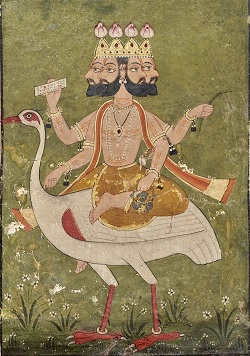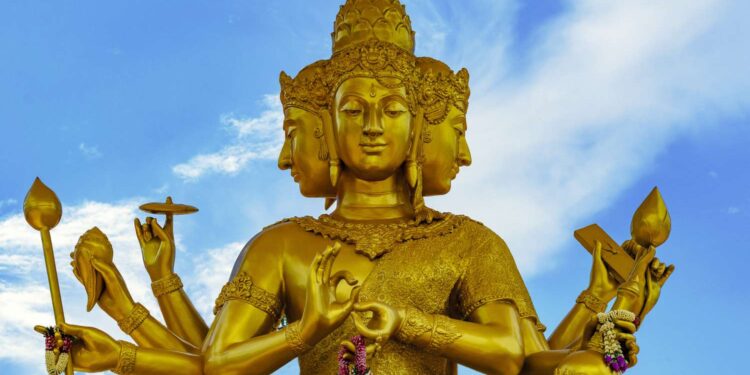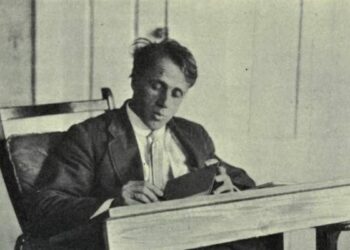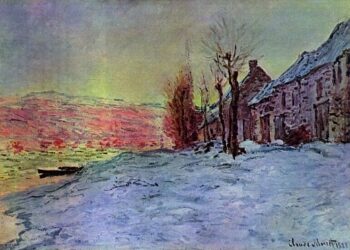Brahma Poem Summary By Ralph Waldo Emerson
Brahma Poem Summary By Ralph Waldo Emerson Ralph Waldo Emerson’s philosophical poem Brahma explores the nature of existence, divinity, and the never-ending circle of life. Emerson’s transcendental views are reflected in it, which is based on the notion of a universal, all-encompassing spirit. Brahma, the highest entity in Hinduism and a symbol of the divine essence that transcends human comprehension, is introduced in the poem.
In the poem, Brahma addresses the human mind—which is frequently constrained by vision, language, and individual limitations—in the first person. According to the speaker, Brahma is the ultimate unity of all things and transcends the dichotomy of good and evil, life and death, and creation and destruction. The message of the poem highlights how existence is boundless and cannot be limited to the temporal realm of material perception.
The narrative voice of Brahma challenges the traditional ideas of human suffering and individual identity, arguing that these are only delusions in the face of a more expansive, all-pervading reality. The speaker exhorts people to acknowledge the divine oneness present in all facets of life, even those that appear difficult or contradictory.
Themes in “Brahma”
1. Unity of Divinity
Brahma Poem Summary By Ralph Waldo Emerson The primary theme of Brahma is the idea of unity within divinity. Brahma represents a divine principle that transcends dualities, such as life and death, good and evil, and joy and sorrow. In the poem, Emerson illustrates how Brahma embodies the unity of all things, and this unity is central to understanding the nature of existence. Brahma is not a personal deity but an abstract, all-encompassing force that connects everything in the universe.
By presenting Brahma as beyond dualistic oppositions, Emerson emphasizes that everything in the universe, from creation to destruction, is part of an eternal cycle that reflects the divinity that underlies all things. The world’s apparent contradictions — birth and death, pleasure and pain — are not opposites but manifestations of the same infinite, divine spirit.
2. Transcendence and Immortality
Another key theme in Brahma is transcendence, or the idea that the soul is not limited to the physical world. In the poem, Brahma suggests that death is merely a transition, and there is no end to the soul’s existence. The poem reflects Emerson’s transcendental belief in the immortality of the soul and its connection to the eternal divine essence. Brahma’s voice transcends the human realm and speaks of the eternal nature of the divine, which continues beyond the limitations of earthly existence.
This immortality is not just individual, but universal — it pertains to the totality of existence. The soul of the individual is ultimately inseparable from the divine, and the experiences of life and death are merely aspects of a larger, divine whole. Emerson’s view of transcendence is one that encourages individuals to look beyond material existence and recognize their spiritual essence.
3. Illusion of Individuality and Suffering
Brahma Poem Summary By Ralph Waldo Emerson In Brahma, Emerson challenges the conventional understanding of individuality and suffering. He suggests that what humans perceive as personal identity is, in reality, a transient illusion.
The ego and selfhood, as conceived by human beings, are temporary and ultimately meaningless in the grand scheme of existence. Brahma’s voice in the poem tells readers that their understanding of themselves as separate, individual beings is flawed.
This idea extends to suffering as well. According to Brahma, suffering is a necessary part of the divine plan, yet it is ultimately illusory. Just as individuality is an illusion, so is the pain that seems to define human experience. Brahma claims that there is no real suffering because all things, including suffering, are part of a divine cycle of existence. In the ultimate reality, pain and joy are inseparable aspects of the same divine unity.
4. Transcendentalism and the Over-Soul
Brahma Poem Summary By Ralph Waldo Emersonb Brahma embodies the transcendental philosophy that Emerson is known for. Central to transcendentalism is the idea of the “Over-Soul,” which is a divine essence or spirit that connects all individuals and the universe.
The Over-Soul is a concept similar to Brahma, representing an all-encompassing divine presence that transcends individual existence. In Emerson’s view, each individual is part of this divine unity, and through spiritual awareness and intuition, humans can connect with the divine.
The idea of the Over-Soul is one of universal connection, where all souls, despite their apparent separateness, are part of a greater spiritual whole. This theme is explored in Brahma through the presentation of the divine as a singular, unified entity that encompasses all life, transcending the material world and the perception of individual beings.

Line-by-Line Analysis
First Stanza:
“I am the wife and the mother, and the virgin
I am the unholy and the holy, and I am the fullness of life.”
- The opening lines present Brahma as a figure who transcends all contradictions and embraces all aspects of existence. The terms “wife,” “mother,” and “virgin” are symbols of various roles that Brahma plays in the cosmic order. Similarly, the description of Brahma as both “unholy” and “holy” reflects the unity of opposites within divinity.
Second Stanza:
“I am the night and the day, the night of heaven and the day of the earth
In me all things do meet, their opposites unite.”
- This stanza emphasizes the transcendent nature of Brahma, as he encompasses both heaven and earth, night and day, and all opposites. It represents the harmonious unity of everything in the universe.
Third Stanza:
“I am the birth and the death, the end and the beginning
I am the infinite; I am the eternal.”
- Brahma identifies himself as both the beginning and the end of all things, embodying the eternal and infinite nature of divinity. This reflects the idea of cyclical existence, where birth and death are part of a continuous process.
Fourth Stanza:
“I am the dark and the light, the good and the evil
In me all things do live and die, the one and the many.”
- This stanza further develops the theme of unity within dualities. Brahma is both good and evil, dark and light — all opposites coexist within him. It speaks to the transcendental idea that opposites are merely different aspects of the same divine reality.
Conclusion
Brahma Poem Summary By Ralph Waldo Emerson A thorough examination of transcendental philosophy and the nature of divinity can be found in Ralph Waldo Emerson’s Brahma. Emerson tackles the complexity of life, death, and pain by referring to Brahma as an all-pervading, infinite being.
The poem is a call to acknowledge the fundamental unity of reality and look past the apparent conflicts. Emerson offers a conception of divinity that sees past the limitations of humanity and into the timeless, unchanging nature of the cosmos.
The poem challenges readers to see that everything, including pain and death, is a part of a divine, harmonious totality and to escape the delusion of individuality and suffering. Emerson’s Brahma offers an energizing, life-changing perspective that is consistent with his transcendental philosophy.
(FAQ)
1. What is the significance of Brahma in Emerson’s poem?
In Emerson’s poem, Brahma represents the infinite, eternal divine principle that transcends human understanding. He is a symbol of unity, where all opposites and contradictions are reconciled. Brahma embodies the transcendental idea that everything in the universe is connected through a divine essence.
2. What does Emerson mean by the unity of opposites?
Emerson’s Brahma emphasizes that the divine nature encompasses all opposites. Light and dark, good and evil, life and death — these are not separate but part of the same unified divine reality. This reflects Emerson’s belief that apparent contradictions are merely different aspects of the same eternal truth.
3. How does Brahma reflect transcendental philosophy?
Brahma is rooted in transcendentalism, a philosophical movement that emphasizes the connection between humanity and the divine. Emerson’s poem presents Brahma as the embodiment of the “Over-Soul,” a divine essence that connects all beings and transcends individual identity. It highlights the transcendental belief in the immortality of the soul and the unity of all existence.
4. What is the central message of Brahma?
The central message of Brahma is that the divine is infinite, transcendent, and encompasses all aspects of existence. The poem urges readers to recognize the illusion of individual identity and suffering, inviting them to understand the deeper unity that underlies all things.
5. How does the poem address the concept of suffering?
In Brahma, suffering is depicted as an illusion. Brahma suggests that suffering, like individuality, is temporary and part of the eternal cycle of life and death. Ultimately, all suffering is reconciled in the divine unity that Brahma embodies.\
Read More :

















